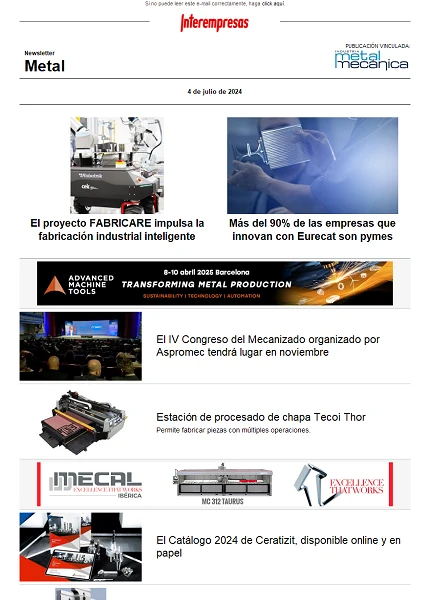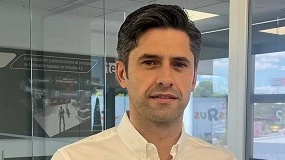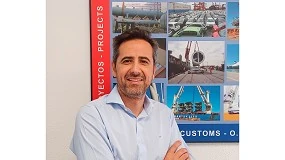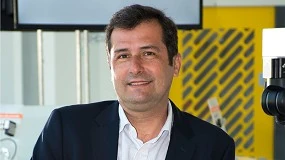Day Redauto: Strategies of recycling in the car
RECYCLING
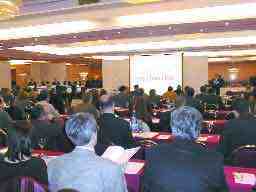
Broadly speaking, this was the preliminary framework of the first days that organized Redauto. Trying to, of course, about "Strategies of recycling in the car", and had the promotion of the Ministry of science and technology. The theme star was, of course, adapting to the Spanish law of the Community rules on recycling of vehicles no longer in use (OUV).
Attendance at the Conference was a success. The room of the Hotel Barceló Sants in Barcelona where took place, was attended by organizations and representatives of companies of all kinds, from institutions dedicated to research in the plastic sector until textile processors, manufacturers of components and "Metalworkers". Any proof that we have 'the industry of the industries', as described by Peter Drucker to the automotive industry in 1946 and that someone dealt with recall during the day. Not in vain: the objectives of recycling requires agreement between all those involved in the life cycle of the car.
The day was divided into three main areas. The first block was dedicated to manufacturers while the first paper reserved the technical adviser of the Sub-Directorate General of environmental quality and coordinator of the National Plan of OUV in the Ministry of environment, Juan José López de Velasco. Followed two industry heavyweights: the head of laboratory of technology of materials (José María del Mazo) SEAT and head of Department of Nissan Motor Iberica and advisory materials and technology of Nissan European Technology Centre Spain(, Oscar Milián).
The second block was devoted to the component manufacturers and suppliers of top level, (Lear Automotive, Idiada Giugiaro and group Antolín). The last block was dedicated to experts and ideas and new business activities generated.
But let's start at the beginning. During this first block the moderator of the talk and representative of ANFAC, Carlos Mataix, wanted to deny a news which had been circulated recently and that came to say that the new legislation makes it compulsory for manufacturers to be responsible for the cost of recycling of the vehicle. Carlos Mataix said that it was a false claim, "the manufacturer takes over, not the costs of treatment, but the cases in which the recycling of vehicles will shed a negative balance". In this connection the Coordinator of the National Plan of OUV, López Velasco, stated that studies show the sale of scrap metal in Spain covers the costs of recycling and that according to the foresight of the sector, "until the year 2006 there will be no negative balances"Therefore, and contrary to what is happening in other European countries, "here we understand that you should not move to the user any increase in price".
Another hot spot of the day referred to the scrapyards needed to take charge of the OUV, which the Administration has put at more than 1,000 ("There who said that they are too" - explained Velasco López - "it was enough one per province")(", although this would not meet the Community directive establishing that it should cover the entire territory"). In this aspect, the plan envisages the creation of a network of up 1,085 authorized centres of reception and decontamination (CARDs) before the year 2003.
Another interesting aspect is when a vehicle leaves to become a hazardous waste. The Administration has decided that "A vehicle shall be considered waste when the certificate on the CARD is issued", this excludes the abandoned vehicles, for example, although to save this stumbling block the delivery of the vehicle to the CARDs won't be any cost to the user.
Added to this is another problem that the directive has not contemplated and that the representative of Sernauto, José Antonio Jiménez Saceda, wanted to put on the table. Spain generates now 841.000 tons of waste from the repair of the vehicle components during its useful life.
Towards an integrated policy of consumption
Manufacturers highlighted the contribution made by the representative of Seat and head of laboratory of technology of materials, José María of el Mazo, which called for "a reorientation of European policy towards an integrated policy of consumption". What does it mean? In his talk, responsible for SEAT showed some implicit contradictions of the EU directive on recycling of vehicles and their transposition to the Spanish legislation. These contradictions are obvious if analyzes the life cycle of the vehicle and is valued it globally. The first contradiction concerns the relationship between weight and safety: we must reduce the weight of the vehicle, opting for aluminium, for example, and should increase the safety, condition that requires increase the weight. Therefore, vehicles weighing the same as before although the materials used are lighter.
Another logical contradiction is that exists between more comfort and less consumption, or from emissions to recyclability, for example. In this aspect, SEAT compared to the lifecycle of a car of steel and aluminium. The results speak for themselves: aluminum cars reduce consumption and emissions (the ratio is 10% less consumption by 25% less weight) but its recyclability is only 67%, compared to steel carsmore pollutants, but with a 75% recyclability.
It is this lack of global vision which has given rise to some complaints from manufacturers. Manufacturers are "prepared to meet some requirements" for the representative Seat, although in some areas are not under the directive. An example of what, in his view, it may be nonsense, it is the fact that administrations came them to ask that they build vehicles that lasts longer, "made that he opposes the same Plan Renove".
Even with everything, according to José María del Mazo, manufacturers do not see problems to reach the percentage of recycling of the 2005 year (85%) but that there will be problems to reach the rates of 95 per cent by the year 2015.
"There will be to increase the mass to be recycled by 7%," said del Mazo. The problem is that these manufacturers have also committed themselves to reduce the consumption of the vehicles by 25% in the next 20 years.
A design for recycling
The environmental policy of Nissan envisages a reduction both in the number of pieces, number of components, weight reduction, using common materials.
On toxic substances, Nissan has provided the complete elimination of the substances directive specified as toxic except in cases in which there are no more alternatives. In addition to those specifically indicated in the directive (lead, chromium 6 or mercury) emphasizes the intention of reducing the use of PVC to a percentage less than 33 per cent in 2005.
Shared responsibility with the manufacturers of components
We must recycle more plastics
Joan Vidal Juncosa, Idiada Giugiaro company, specializing in vehicle engineering projects, considered aspects of recycling in relation to vehicle design. This design should be seen as far away aspects such as ergonomics or aerodynamics, safety, cost requirements and now recycling requirements.
According to Vidal, the problem of recycling of vehicles is not in the metal part of the car (that is recycled without problems) but in plastic materials. I.e., to increase the percentage of recycling should increase the recycling of plastic materials, which tends to grow in automotive applications.
In this sense, Vidal stated that builders are starting a series of actions in regards to these plastic materials.
General actions:
- Drawing up lists of substances prohibited and lists of restricted materials.
- Development of a database that links the information in the lists with the systems and components of vehicles.
- Edition of manuals of disassembly of vehicles. Known as IDIS (International IDIS Information System).
- Establish programmes of research institutes, Governments and universities.
Specific actions:
- Identification and marking of the different plastic materials according to international standards for parts of more than 50 grams.
- Testing and validation of recycled plastic materials (elastomers and thermoplastic resin) to identify the areas of application in the manufacture of new vehicles.
Compatible materials
The Group Antolín, manufacturer of French and components for the passenger compartment, explained in his talk the system used to meet the requirements of quality and environmental (that they have been called index environmental Antolín). According to the representative of the group, the requirements in the environmental section come from builders and concerning the plastic materials used. In this respect, there were complaints about the reluctance of suppliers of second level to provide data for the materials they use.
The policy that follows this group with respect to the materials also involves the Elimination of the restricted and the use of compatible and easily separable materials. An example of this would be a tray of injected polypropylene reinforced with 20% of talcum powder, coated with carpet 100% polypropylene.
Antolín group has carried out some research in materials, although they deserve special mention, we have collected in its fundamental lines:
In French ceilings:
- He opted for the natural fibers instead of fiberglass.
- Monocomponentes materials: technology PET 100% polyester with absence of adhesive fibers.
- Reuse of waste for the production of agglomerates
In panels for doors and rear trays:
- Thermoforming recyclable resins-based.
- Injection with polyolefinic and natural fibers materials.
- Thermoforming of materials based on natural fibres and PP.
Recycled plastics
Objectives of recyclability of vehicles no longer in use Plan
For all the vehicles for scrap.
From 1 January 2006
- Reuse and minimum recovery of 85% of the weight of the vehicle
- Reused or recycled at least 80% of the weight
As of January 1, 2015
- Reuse or minimum rating of 95% of the weight
- Reused or recycled at least 85% by weight






















